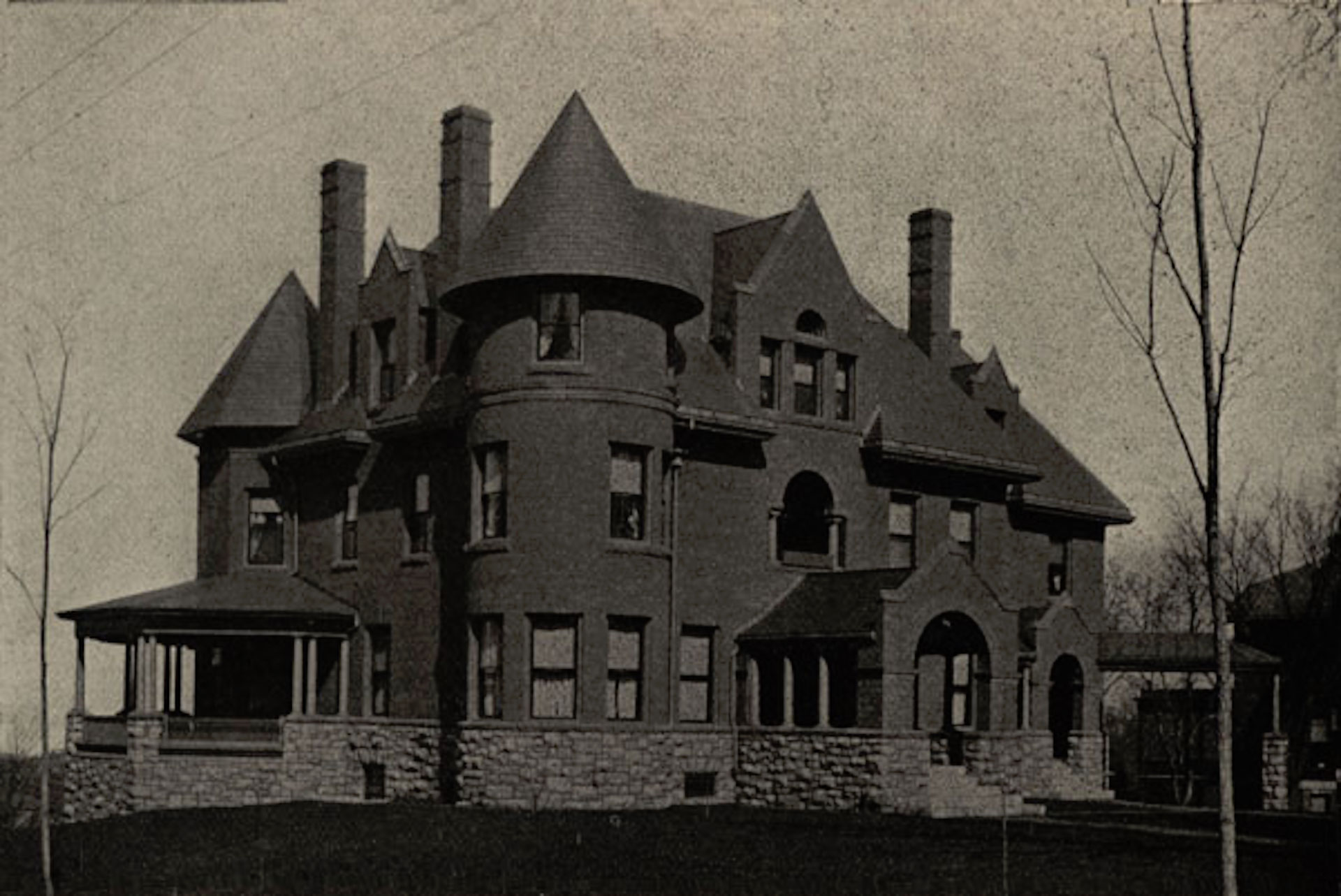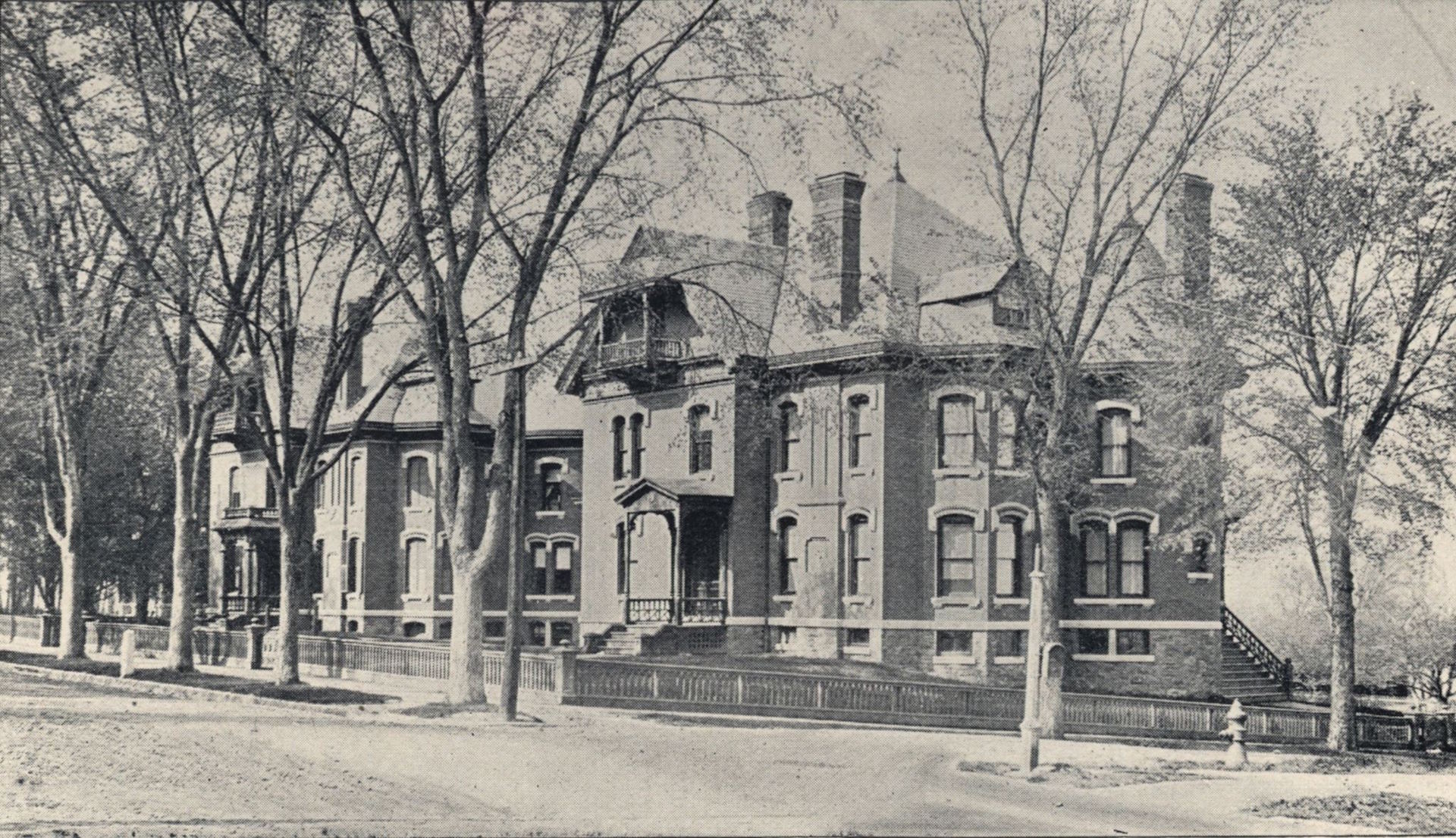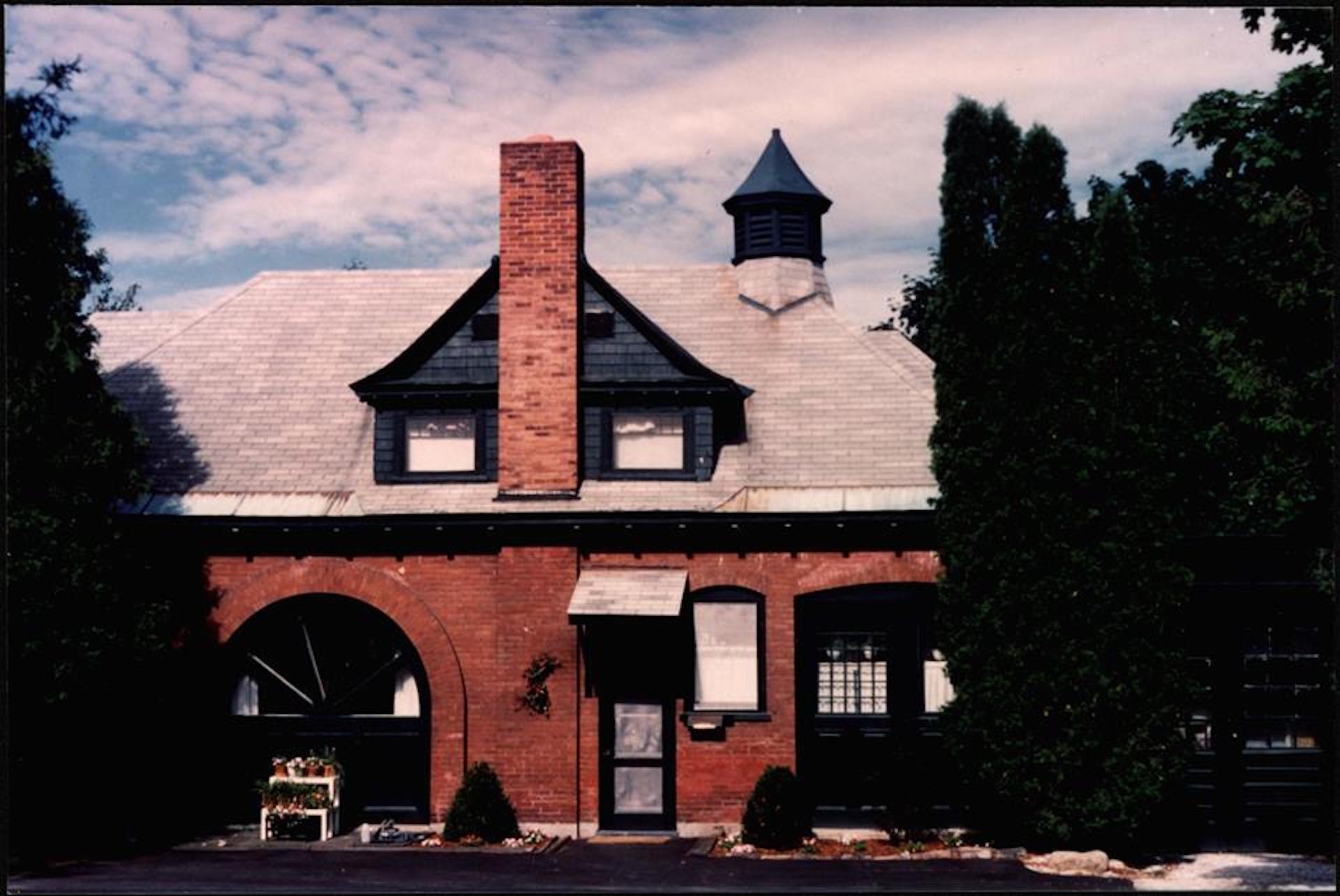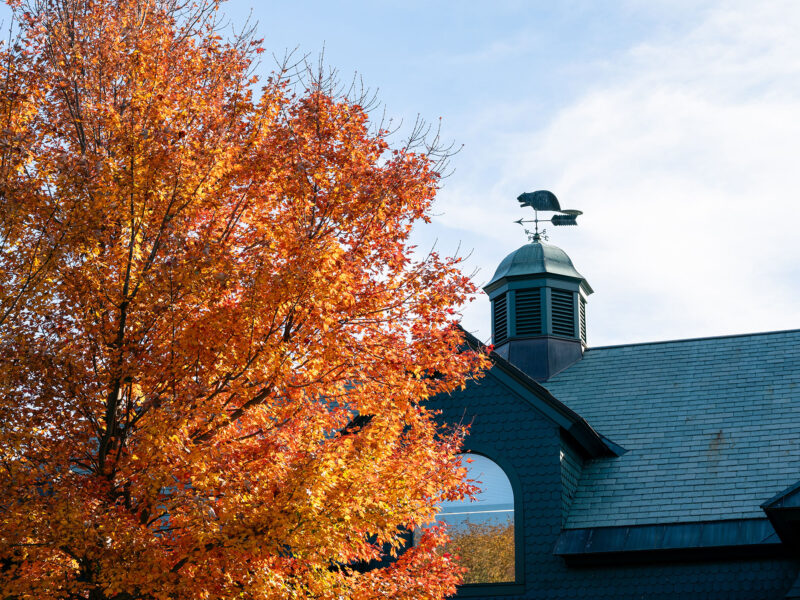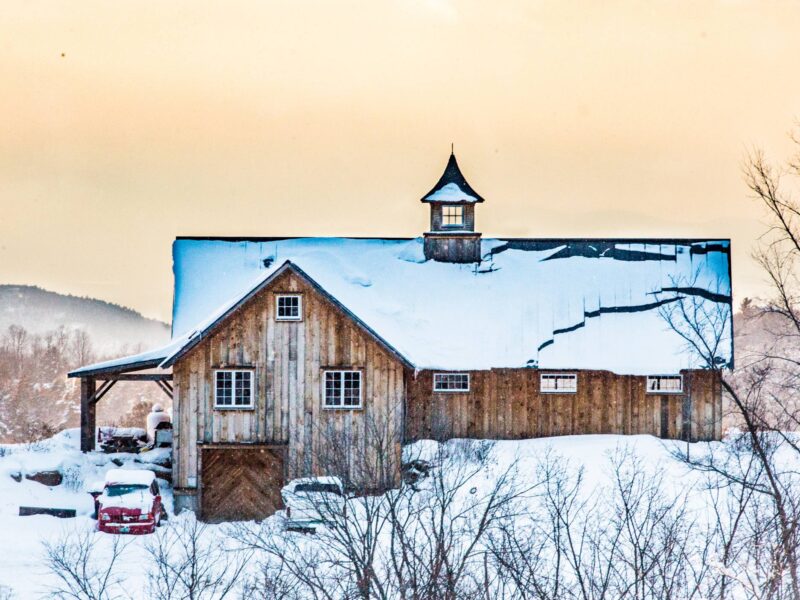Blast From the Past: Champlain’s First-Year Victorian-Era Res Halls

First-year students at Champlain College live in renovated Victorian-era houses in the Hill Section of Burlington, Vermont. We were curious about the history of these beautiful buildings, so we went digging through the Champlain College archives in the Miller Information Commons.
Bader Hall
On the corner of South Willard and Maple streets is one of Champlain’s most recognizable residences: Bader Hall.
This Italianate residence was built by A. B. Fisher for Edward Lyman, who owned a dry goods store on Church Street called Lyman & Allen. Lyman and his family lived in the house until his death in 1890. Lyman’s daughter, Minnie, and her husband, Robert Roberts (mayor of Burlington from 1899–1901 and again from 1912–13), moved in soon after. They lived in the home until 1940, when Roberts died.
Roberts willed the house to the University of Vermont (UVM), who used it as a dorm named Roberts Hall. C. Bader Brouilette, Champlain’s fourth president (1956–77), bought the residence from UVM in 1960, two years after he moved Champlain College from downtown to the Hill Section of Burlington. He named it Bader Hall after his mother, Edith Bader, and the hall became home to administrative offices for the next 20 years. Champlain’s library was even housed in the hall until 1964, when it was moved to the then-newly-built extension of Freeman Hall.
In 1980, Bader Hall was transformed into a residence hall, and went under an extensive interior renovation in 2012. Bader Hall is one of Champlain’s most centrally located first-year residence halls, just steps away from the Center for Communication & Creative Media.
McDonald Hall
Did you know that Champlain College has its own miniature castle on campus? The distinctive Romanesque Revival-style architecture of McDonald Hall was designed by W. R. B. Wilcox in 1897 for banker Charles P. Smith and his family. A carriage house was also constructed on the property around the same time.
Charles Smith’s grandson, Frederick Smith, was a financial advisor to C. Bader Brouilette. He advised Brouilette to purchase the Burlington Business College (Champlain’s former name) in 1956. Various members of the Smith family continuously lived on the property until 1979, which is when they sold the main house to Champlain.
The main building was named after its street address until 1989, when it was coined McDonald Hall in honor of Vice President of Admissions Vernon McDonald, who retired that same year after 30 years with the College. Champlain bought the carriage house in 2004 and renovated it in 2008 to become Adirondack Hall, a sophomore residence hall. Today, McDonald Hall is one of Champlain’s most popular first-year halls.
Whiting Hall
Did you know that at one point, the original owners of McDonald Hall also owned the house right next door? Whiting Hall was built around 1880 for attorney John T. Drew and his wife, Lucy. Drew died around the same time the house was completed, but Lucy resided there until Alfred C. Whiting bought the house in 1888. The Whiting family, owners of the former Whiting Brush Company on Pine Street, lived in the home until 1924, when they donated it to UVM. Then-president Guy W. Bailey resided there until 1940.
UVM converted the house into a dormitory named Elmwood Hall two years later. Frederick Smith—of the same Smith family who lived in what is now McDonald Hall—purchased the building in 1957 and used it as a private residence.
Ten years later, Champlain bought the house and converted it back into a residence hall. The building was named Whiting Hall after the Whiting family. In the 1970s and 80s, the hall also housed a chapel, classrooms, and the campus bookstore. It underwent extensive renovations in 2014 when an addition was built onto the back of the building. Now, the ground floor houses the Student Health Center and the rest of the building is home to approximately 40 first-year students.
Hill Hall
Twins come in all different types and sizes—including houses! Hill Hall and Lyman Hall were built side-by-side around 1884 by A. B. Fisher for A. W. and J. W. Dunham, two lumber-dealing brothers. The two houses are nearly identical, only different in coloring and woodwork detail.
Elias Lyman, a prominent founder of the former Elias Lyman Coal Company, purchased what is now Lyman Hall in 1889. Lyman lived there until 1923 when Thomas Wright bought the home. Lyman’s descendant, Edward Phelps Lyman Sr., later served as a faculty member and vice president at Champlain. The College honors a faculty member each year in his honor with the Edward Phelps Lyman Professorship.
Edward Clarkson bought Hill Hall in 1920 and became a business partner of Wright and Frank Abernethy’s, of the former Abernethy’s Department Store on Church Street. Abernethy himself lived in what is now Bankus Hall.
Champlain acquired the two houses only a few years apart: Lyman Hall in 1968 and Hill Hall in 1973. Both buildings were named in honor of family members associated with the structures, some of whom had connections with the College. Edward Clarkson’s grandson, Ralph Nading Hill Jr., wrote the first history of Champlain College, “The Invisible College.” He was also a trustee of Champlain and donated funds to create a campus computer lab in memory of his father, Ralph Nading Hill Sr.
Carriage House
One of Champlain’s most unique buildings is a first-year residence hall nestled between Freeman, Wick, and Foster Halls: Carriage House. But this residence hall wasn’t originally built to be any kind of home. It was built by S. B. Saxe around 1894 and used to store carriages (and later cars) of the Presbrey family, who lived in what is now Schillhammer Hall—another first-year residence hall—from 1895 to 1921.
In the 1930s, Roland and Caroline Doane transformed the carriage barn into a private home. They taught French and Russian at UVM. During World War II, the Doanes sheltered refugee children of several Resistance fighters in Carriage House. They later moved to Birmingham, Alabama, where they were active in the Civil Rights Movement.
Champlain bought the converted carriage house in 1994, and it was used as the President’s House before turning into a residence hall. Named after its original function, Carriage House is Champlain’s smallest residence hall—only 14 students live there each year.
Jensen Hall
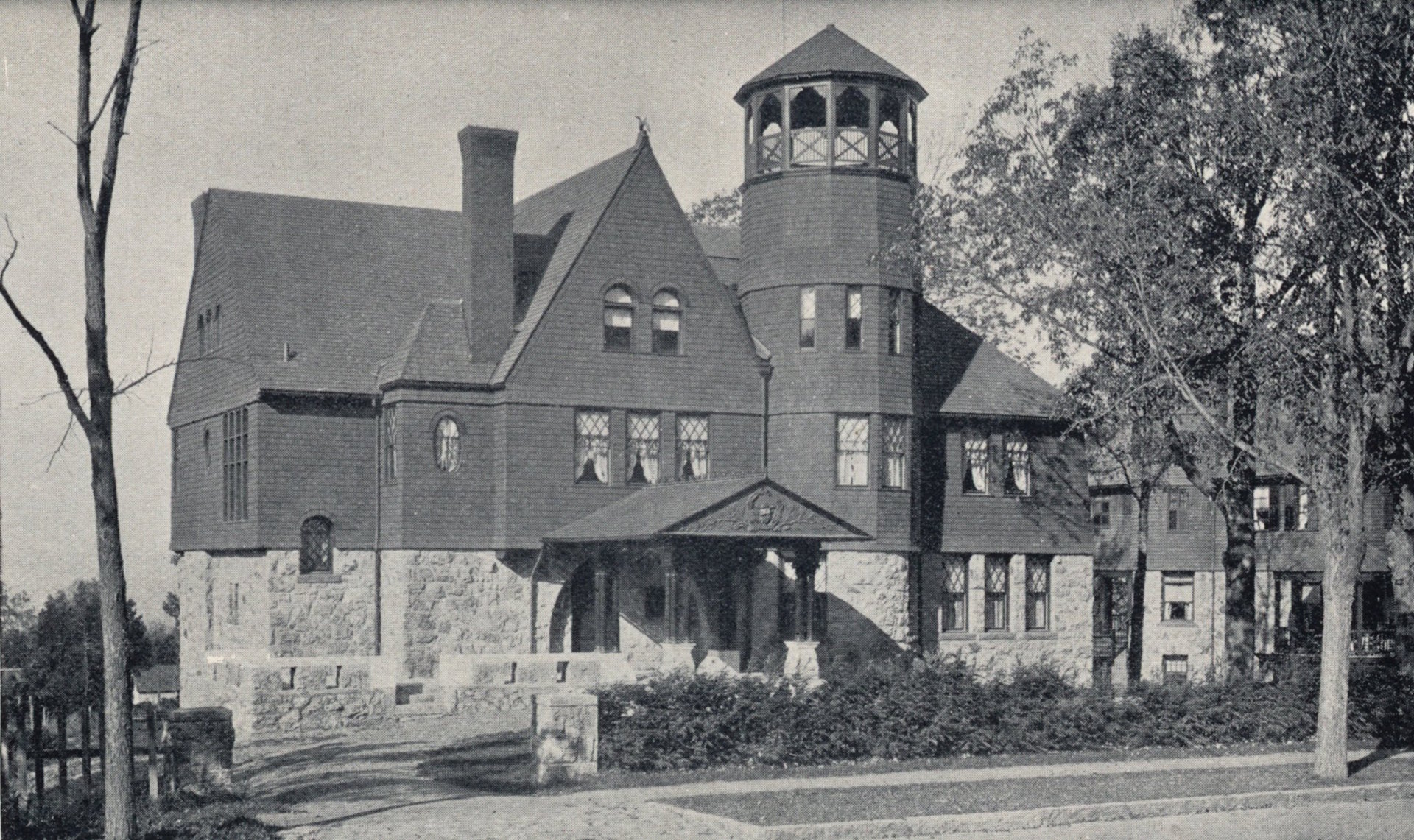
Did you know that before 1965, Champlain students didn’t have an on-campus residence hall? Instead, they boarded with local families while completing their studies. To fix this, Champlain purchased the building that is now Jensen Hall.
This beautiful, shingle-style house was built in 1888 by Burlington architect A. B. Fisher as a summer home for Lt. William Loomis of Chicago. Many different people have occupied the house over the years, including Walter Gates, city editor of the Burlington Free Press in the early 1900s. UVM bought the house and used it as a women’s residence hall in the mid-1900s. In the 1960s, Champlain was in desperate need of a residence hall for its growing student population, leading it to make the purchase from UVM in 1965. C. Bader Brouilette named it after Albert Jensen, his partner in the purchase of the Burlington Business College —later to become Champlain College.
Want to see these beautiful, historic houses for yourself? Come visit Champlain!
Author
More Inside The View
Ideas
From the minds of our students, faculty, and alumni.
News
The latest from Champlain College.
People
Champlain is more than just a place; it's a community.
Places
On campus, in Burlington, and beyond.
Events
Check out our many campus events and get involved! Refine your search by using the filters or monthly view options.

